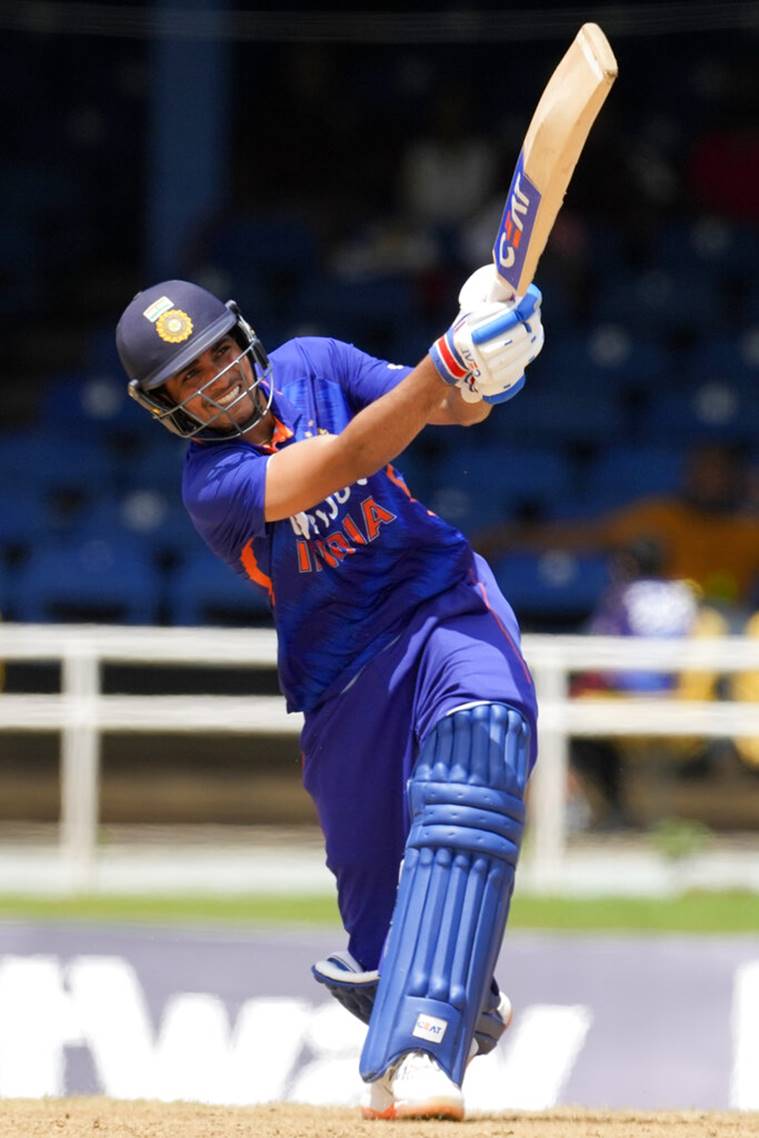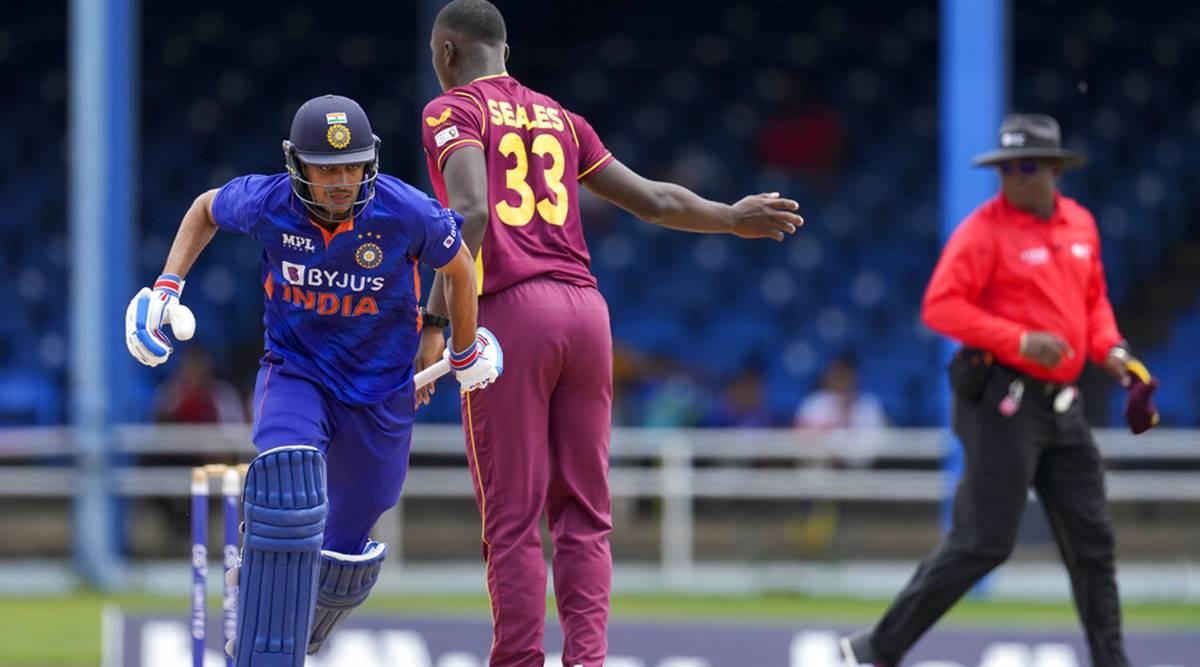 India's Shubman Gill plays a shot against West Indies during the third ODI cricket match at Queen's Park Oval. (AP Photo))
India's Shubman Gill plays a shot against West Indies during the third ODI cricket match at Queen's Park Oval. (AP Photo))Heading into the West Indies tour, Shubman Gill had played all of three ODIs spread across two years, the last of them coming in 2020. He’s since gone on to establish himself as one of India’s most promising Test batsmen; he also enjoyed his most productive Indian Premier League season yet earlier this year, for Gujarat Titans.
But he’d not exactly been among the foremost prospects for the 50-over national side, and but for the absence of so many regulars, would likely have missed this trip to the Caribbean. At the end of the three-match contest, though, with three solid scores, he has forced himself into the discussion about the future make-up of the Indian ODI team.
With competitors Ishan Kishan and Ruturaj Gaikwad in the same squad, Gill didn’t squander his chances. He did give away his starts in the first two ODIs, but importantly, showed signs of adapting in the third game on Wednesday; he looked intent on playing a longer innings until the rain arrived halfway into the Indian innings.
In the first ODI Gill had displayed his potential in this format. In largely benign conditions at the Queen’s Park Oval in Trinidad, he tore into an inaccurate West Indies bowling attack in the powerplay, making them pay almost every time they erred in line.
Subscriber Only Stories
Ahead of IPL 2022, Gill had told this paper that he had made a conscious effort to cut down on the trigger shuffle in his stance when the ball wasn’t doing much, which is often the case in white-ball cricket. “That (reducing the shuffle) was one adjustment I made after talking to our batting coach. I felt I should restrict my initial movement a bit. (If) the ball doesn’t swing much, the lesser the movement in your body, the better it will be for you,” Gill had said.
 Shubman Gill in action during the third ODI cricket match at Queen’s Park Oval in Port of Spain, Trinidad and Tobago. (AP Photo)
Shubman Gill in action during the third ODI cricket match at Queen’s Park Oval in Port of Spain, Trinidad and Tobago. (AP Photo) The 22-year old anyway likes to stay beside the line of the ball, and that was apparent in the freedom with which he played the square punches and cuts in the series opener. He had raced to 64 off just 53 deliveries, when that momentary lapse in concentration happened. He turned the ball to square leg, and started jogging for a single. He took his eyes off the ball for an instant and the advancing Nicholas Pooran seized on the opening. By the time Gill belatedly tried to hurry towards the non-striker’s end, the direct hit had ended his stay.
He was slightly more circumspect in the second match as India were chasing 312, but began to take some risks against the slower bowlers. He swept Akeal Hosein for four as soon as he came on. However, a couple of overs later, he tried an uncharacteristic scoop over the wicketkeeper off the medium pace of Kyle Mayers, and only popped the ball back to the bowler. It is a shot he hardly plays even in T20.
Gill is new to the format at this level and it felt as if he was trying too hard at times to make the most of the field restrictions and the following few overs. He’s said that run-scoring has become harder in this series as the ball has got older, so going big at the start wasn’t without sense. But it did seem to get to him on occasion if a boundary didn’t come for a bit; he’d shake his head in visible disappointment if he timed the ball to a fielder in the inner ring, something he’s been known to do earlier in T20.
 Shubman Gill avoid West Indies’ bowler Jayden Seales and steals a quick single. (AP Photo)
Shubman Gill avoid West Indies’ bowler Jayden Seales and steals a quick single. (AP Photo) But in the final game, there was more discipline in his approach. Unless the ball was angled into the pads or really wide outside off, he didn’t go for the boundary. In fact, he hit only three fours in reaching his fifty, which took 60 balls.
Gill didn’t let the leg-spinner Hayden Walsh settle though. He took a look at him for a couple of balls, and as soon as he saw some flight, Gill stepped out to launch Walsh onto the roof beyond long-on.
After the rain interruption, which stretched for two and a half hours, Gill brought out the destructive side of his game with the match cut to 40 overs a side. Out came the slog, the big sweep, and the short-arm pull, which he has of late attempted to intentionally play in the air in white-ball to maximise his chances of a boundary. It is only one series, of course, but at the very least, Gill has made a convincing case to be given more of them in this format.
- The Indian Express website has been rated GREEN for its credibility and trustworthiness by Newsguard, a global service that rates news sources for their journalistic standards.

